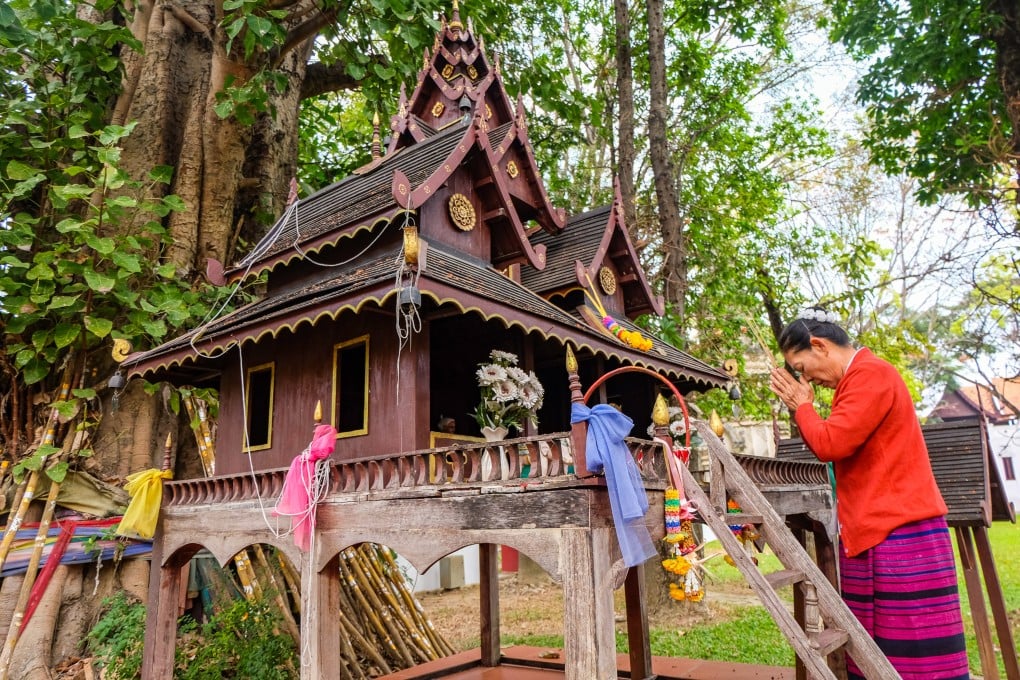Advertisement
Explainer | What are Thailand’s colourful spirit houses – and how are they set up? From Bangkok’s famous Erawan Shrine to humble rural outposts
- Every visitor to Thailand will have passed a spirit house, but they are a little understood aspect of the local culture – here’s why the san phra phum is so lovingly maintained
Reading Time:3 minutes
Why you can trust SCMP

Some of the most distinctive and unforgettable sights of Thailand are the dollhouse-sized buildings, frequently draped in garlands, that stand on pillars in the gardens of homes or in the grounds of public buildings.
Advertisement
Their form varies from simple, stilted representations of Thai houses to elaborate temple buildings, reflecting the status of the owner.
They are common, but spirit houses are a little understood aspect of Thai culture.
Thais believe that physical ownership of land is not enough to guarantee a happy and secure existence. To bring this about requires the assistance of the spirit of the land, known as Phra Phum.

“Phra” means “venerable one” and is also used to refer to monks. “Phum” comes from the Sanskrit “bhumi”, meaning “earth” or “soil”. The shrine in which the spirit takes up residence is called “san” in Thai, so a spirit house is referred to as a san phra phum.
Advertisement

Advertisement